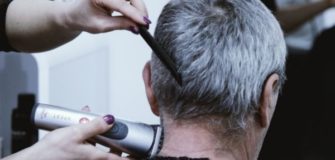Opinion: Improved COVID safety levels in Victorian residential aged care facilities
Share
One of the constants in our response to the COVID-19 pandemic is that we are continuously learning and focusing our efforts to increase protection levels, particularly for the most vulnerable people in our community.
A prime example of this has been the work undertaken by people across the aged care sector, from providers to advocacy organisations, public health officials, and most importantly, aged care workers, to greatly improve protection levels in Victoria’s residential aged care facilities.
Consider the second wave of COVID-19 that struck Victoria last year. More than 1960 people living in residential aged care facilities became infected with COVID-19 between June and November 2020. Tragically, of these people, 648 died as a result of contracting the virus.
Back then, we didn’t have any COVID-19 vaccines approved for use by the Therapeutic Goods Administration.
Today, we have two approved COVID-19 vaccines – and more than 70 per cent of Australians aged 70 and over have had a vaccine.
Today, all but one of the 2,566 residential aged care facilities across the country – including 596 in Victoria – have received their first and second dose COVID-19 vaccination clinics through the Commonwealth’s vaccine rollout program, an achievement we should be celebrating.
A flu outbreak has delayed the second dose clinic attending the one remaining facility. However, this clinic will be completed in the coming days.
This level of vaccination has increased the protection levels for older people living in such facilities – and the people who care for them.
Our aged care workforce has demonstrated great commitment and dedication – and has continually improved practices to ensure older Australians receive the best quality care.
I thank every aged care worker who has been vaccinated. It is vital those not yet vaccinated roll up their sleeves as soon as possible (and don’t wait for when it is mandatory) to provide an essential added layer of protection for residents and the workforce.
Today, all residential aged care facilities have an infection prevention and control (IPC) nurse and plans in place to respond to any cases of COVID-19.
The Commonwealth has supplied millions of pieces of personal protective equipment to aged care facilities – and funded training to help residential aged care facilities improve IPC practices, as well as a surge workforce, in the event of a COVID-19 outbreak.
All jurisdictions, including Victoria, have agreed to activate aged care emergency response centres, if required, within 48 hours of an outbreak occurring in a residential aged care facility.
Aged care staff are requested to work at a single site during periods when a hotspot has been declared by the Australian Government’s Chief Medical Officer, and guidelines are now in place to provide advice about allowing visitors.
Fast forward from Victoria’s second wave in 2020 to a recent outbreak of COVID-19 in a Victorian residential aged care facility. The outbreak this year was quickly contained – a direct result of the high vaccination levels and the suite of other measures implemented to improve IPC standards.
It is a great credit to our aged care sector and a testament to what can be achieved when we all work together.












